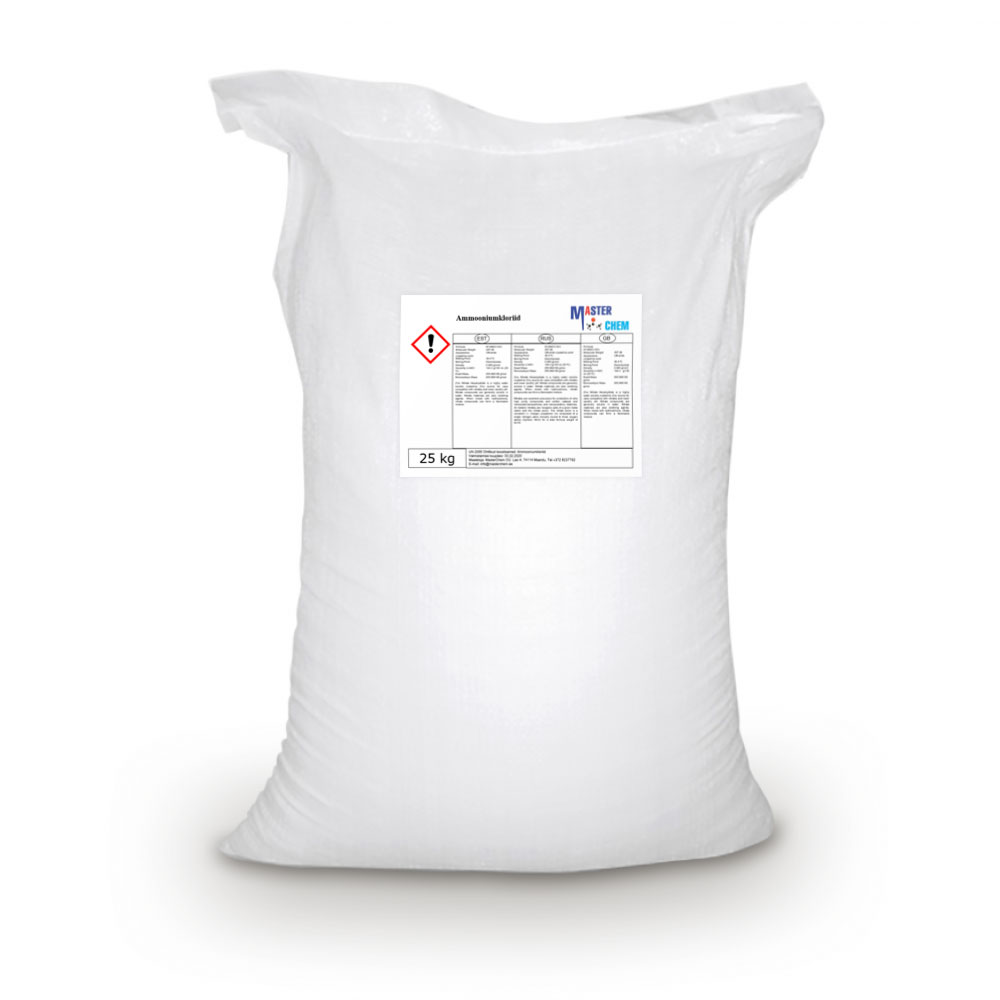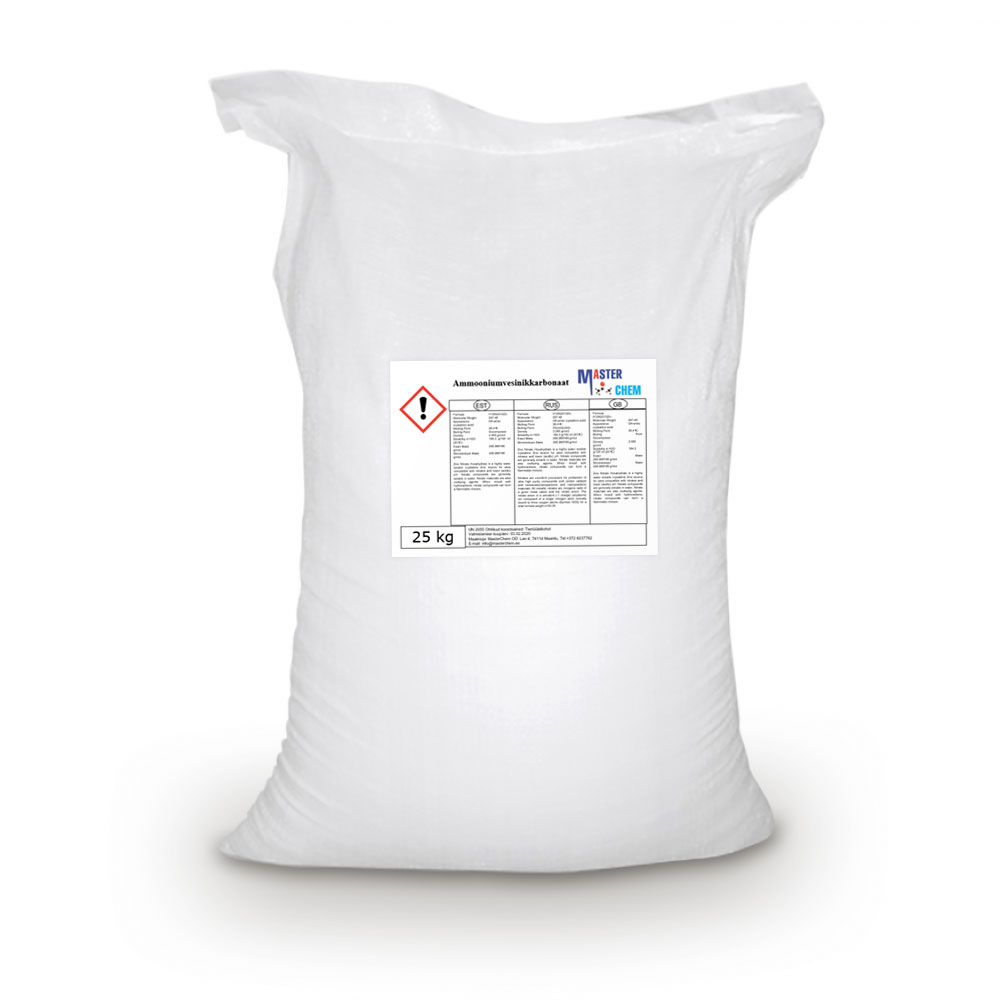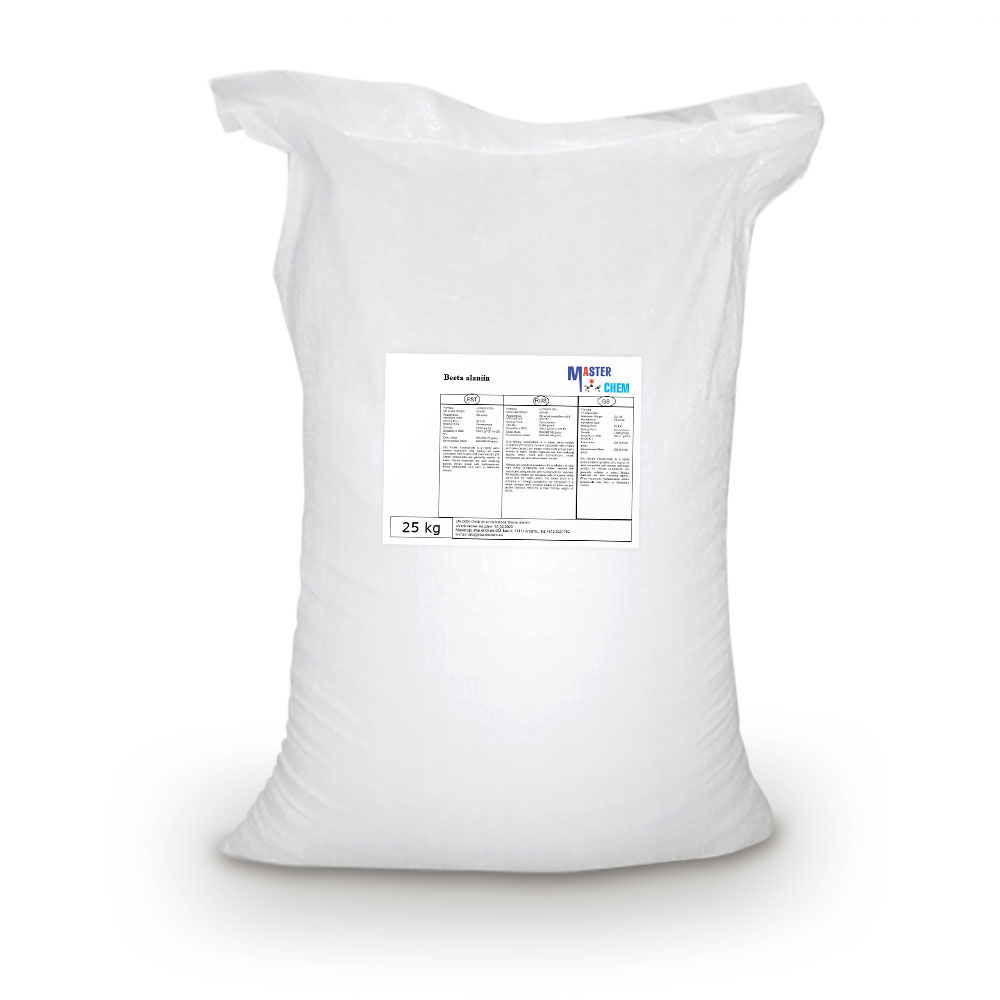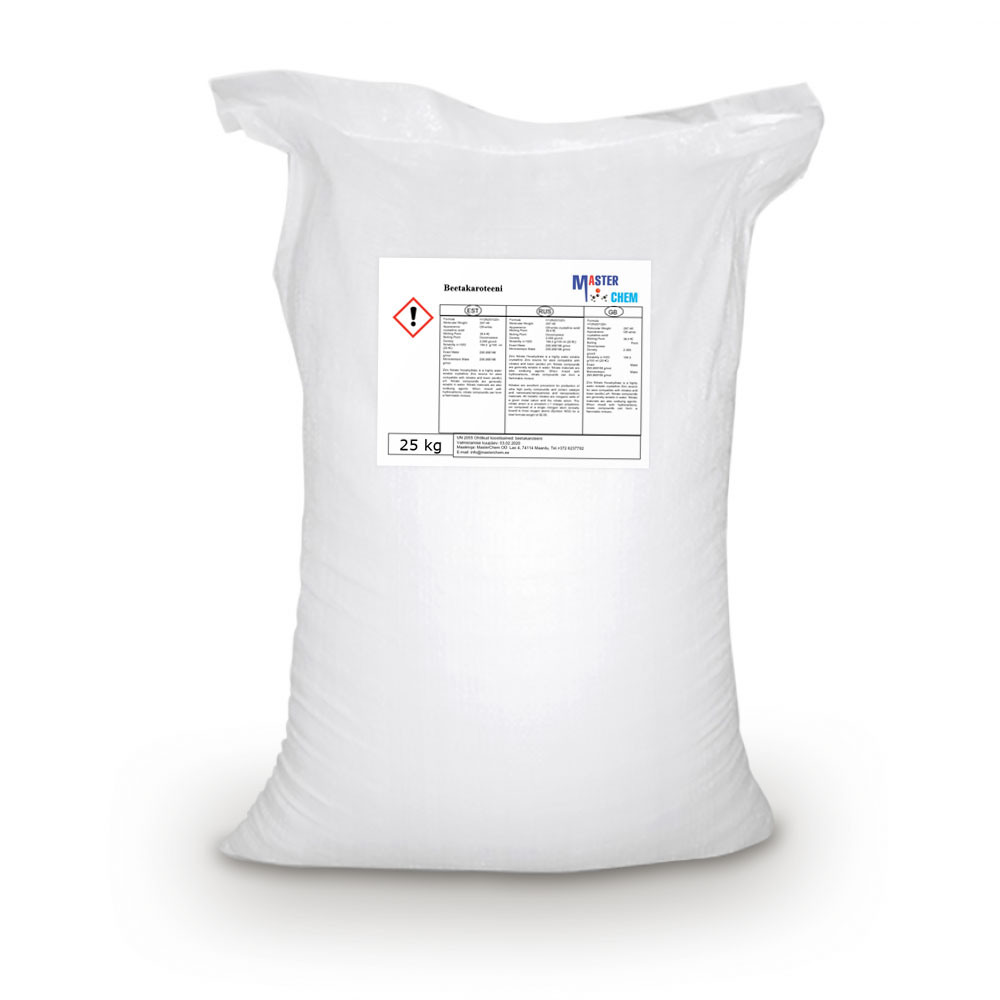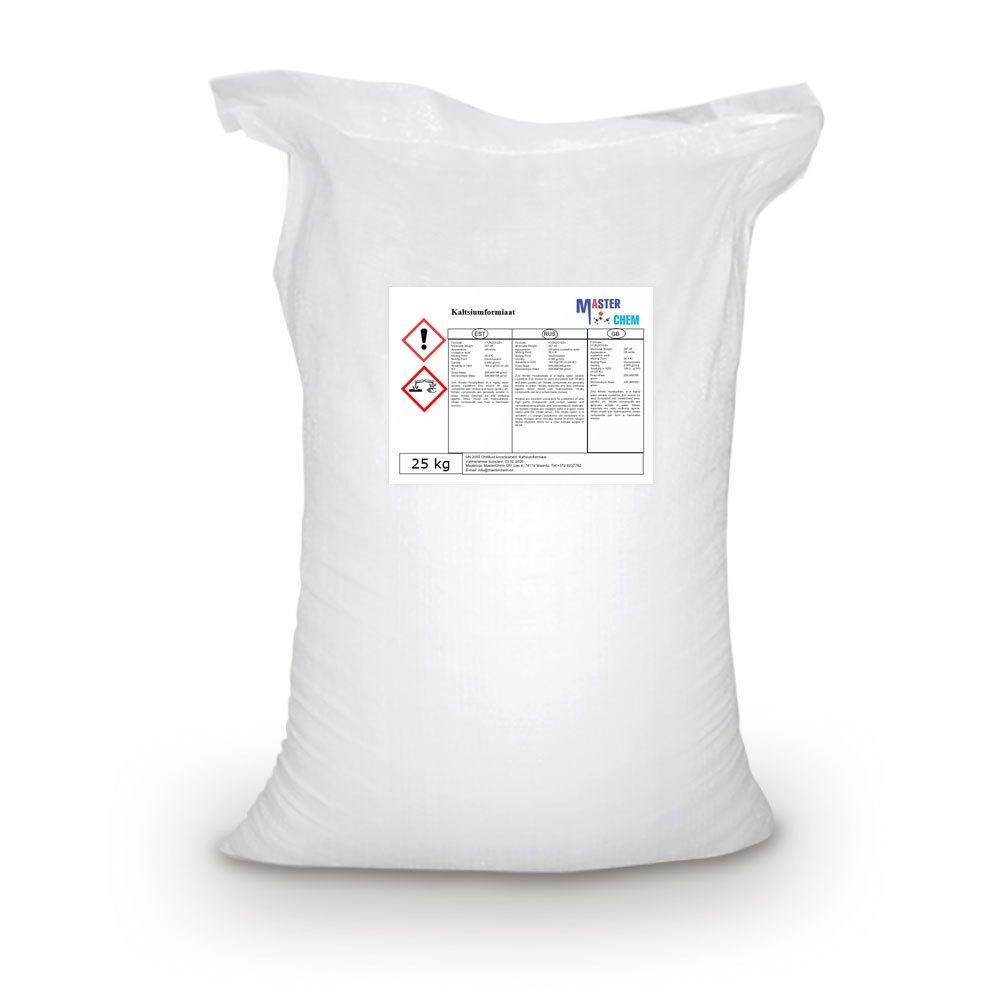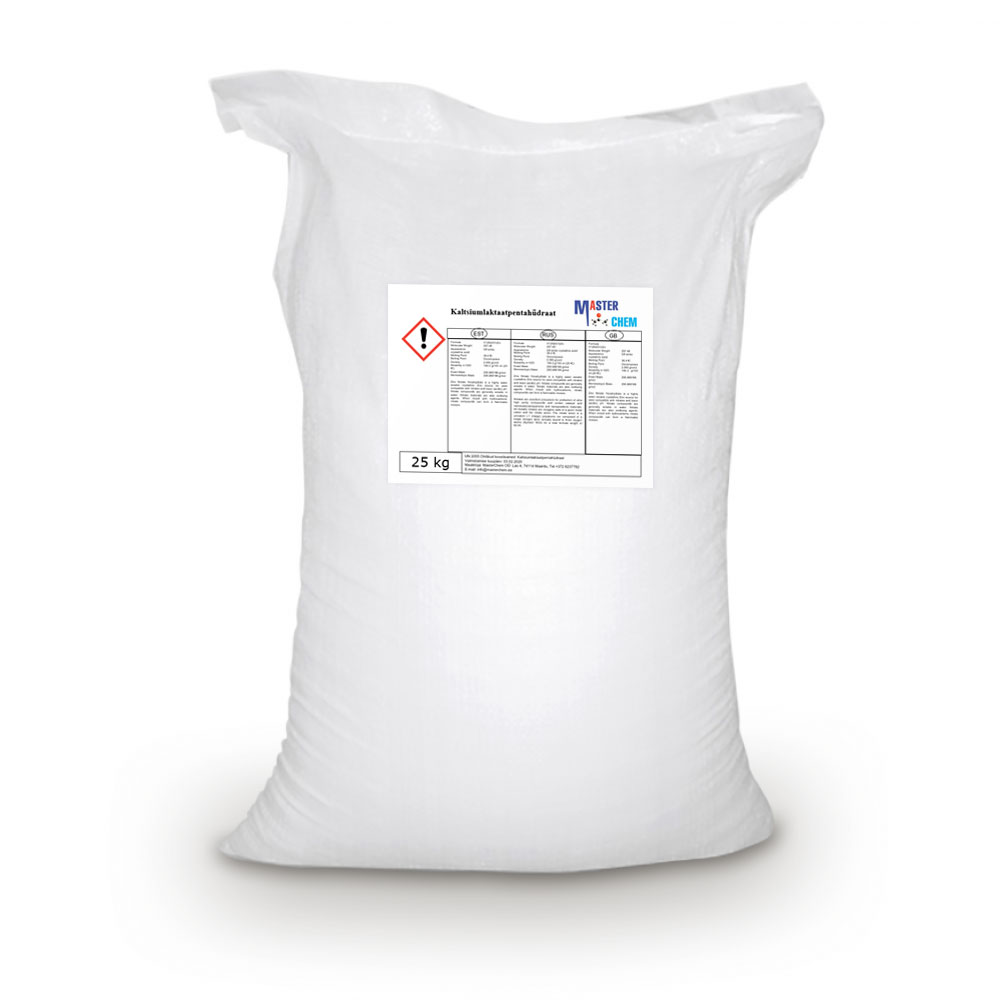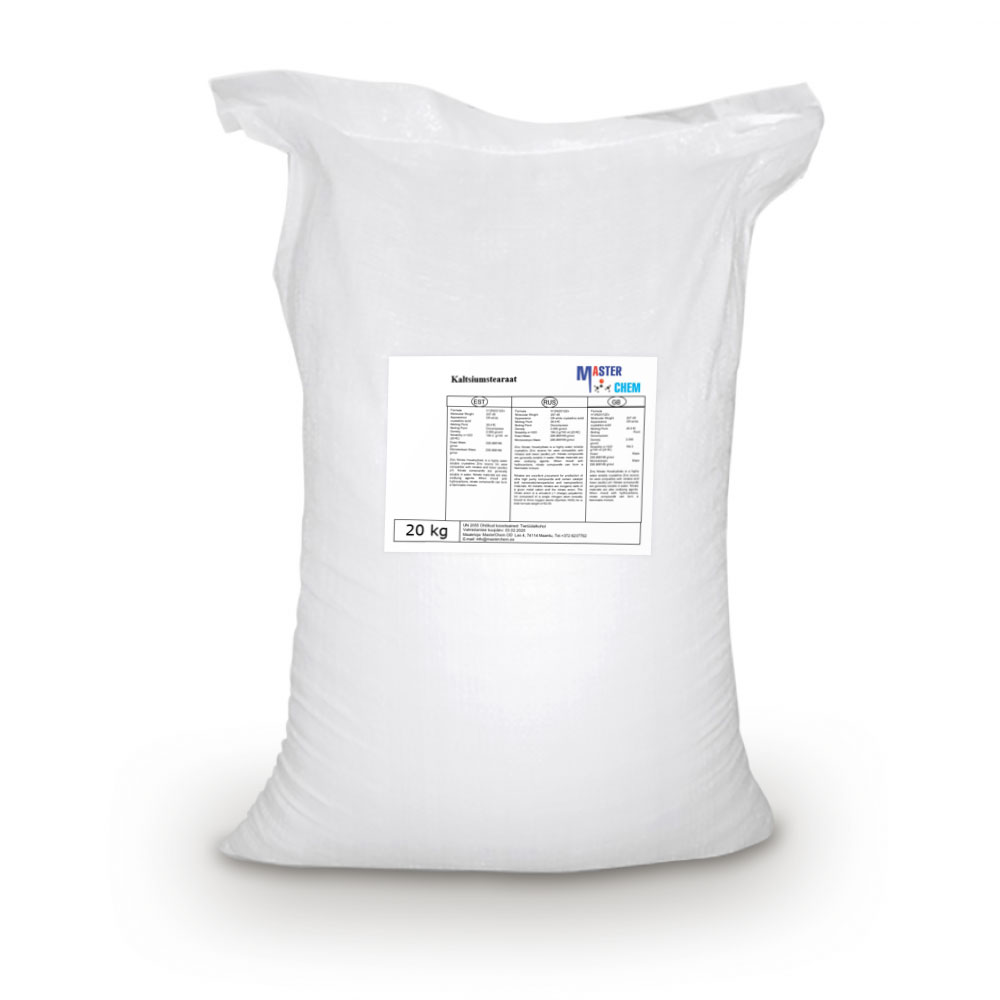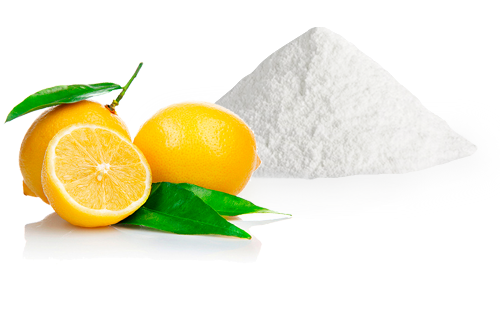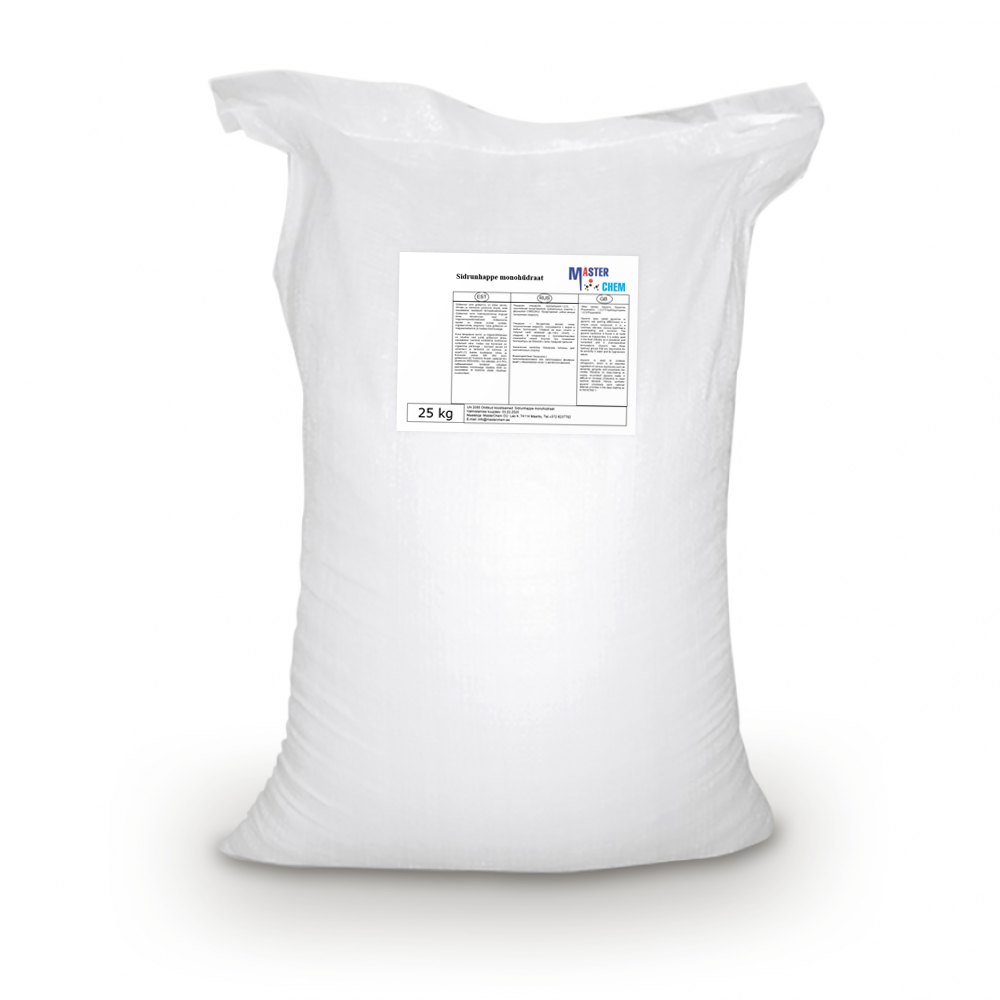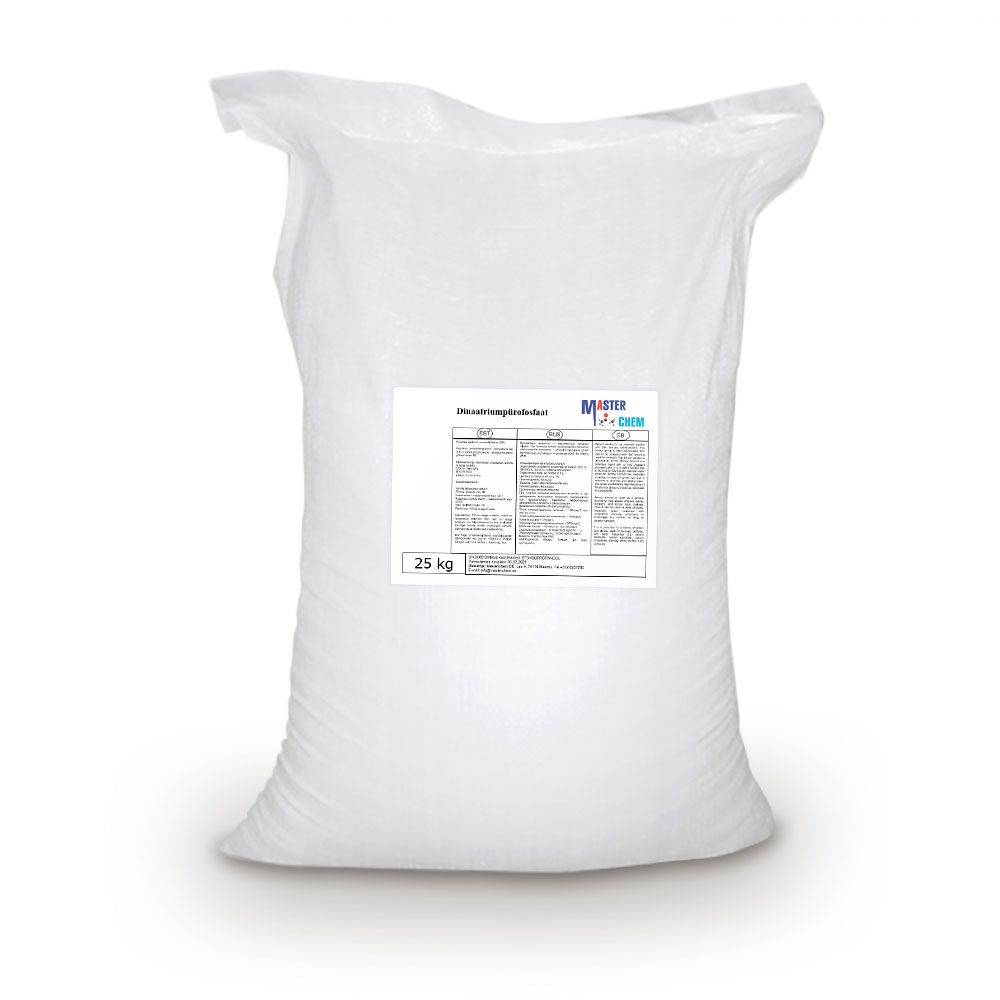Currently Empty: €0.00
Ammonium acetate (CAS 631-61-8)
Ammonium acetate (CAS 631-61-8)
Ammonium acetate, also known as spirit of Mindererus in aqueous solution, is a chemical compound with the formula NH4CH3CO2. It is a white, hygroscopic solid and can be derived from the reaction of ammonia and acetic acid. It is available commercially.
Ammonium acetate is also used as a food additive as an acidity regulator; INS number 264. It is approved for usage in Australia and New Zealand.
Ammonium chloride (CAS 12125-02-9)
Ammonium chloride (CAS 12125-02-9)
Ammonium chloride is an inorganic compound with the formula NH4Cl and a white crystalline salt that is highly soluble in water. Solutions of ammonium chloride are mildly acidic. Sal ammoniac is a name of the natural, mineralogical form of ammonium chloride. The mineral is commonly formed on burning coal dumps from condensation of coal-derived gases. It is also found around some types of volcanic vents. It is mainly used as fertilizer and a flavouring agent in some types of liquorice. It is the product from the reaction of hydrochloric acid and ammonia.
Ammonium hydrocarbonate (CAS 1066-33-7)
Ammonium hydrocarbonate (CAS 1066-33-7)
Ammonium bicarbonate is an inorganic compound with formula (NH4)HCO3. The compound has many names, reflecting its long history. Chemically speaking, it is the bicarbonate salt of the ammonium ion. It is a colourless solid that degrades readily to carbon dioxide, water and ammonia.
Beta alanine (CAS 107-95-9)
Beta alanine (CAS 107-95-9)
β-Alanine (or beta-alanine) is a naturally occurring beta amino acid, which is an amino acid in which the amino group is attached to the β-carbon (i.e. the carbon two atoms away from the carboxylate group) instead of the more usual α-carbon for alanine (α-alanine). The IUPAC name for β-alanine is 3-aminopropanoic acid. Unlike its counterpart α-alanine, β-alanine has no stereocenter.
Beta carotene (CAS 7235-40-7)
Beta carotene (CAS 7235-40-7)
Beta carotene is an organic, strongly coloured red-orange pigment abundant in fungi, plants, and fruits. It is a member of the carotenes, which are terpenoids (isoprenoids), synthesized biochemically from eight isoprene units and thus having 40 carbons. Among the carotenes, β-carotene is distinguished by having beta-rings at both ends of the molecule. β-Carotene is biosynthesized from geranylgeranyl pyrophosphate.
Calcium formate (CAS 544-17-2)
Calcium formate (CAS 544-17-2)
Calcium formate is the calcium salt of formic acid. It is also known as E238. Under this E number it is used as an animal feed preservative within EU, but not in foods intended for people. Calcium formate is stable at room temperature, is inflammable and forms orthorhombic crystals. The mineral form is very rare and called formicaite, and is known from a few boron deposits.
Calcium formate is used within EU as an animal feed preservative. It acidifies the feed thus preventing microbe growth and increasing shelf life. About 15 g of calcium formate addition per kg of feed lowers its pH by one. 15 g/kg is the maximum recommended feed concentration within EU – this level is thought to be safe for pigs, chickens, fish and ruminants. The compound is not environmentally harmful in feed use at these levels. Calcium formate prevents the growth bacteria such as E. coli, Pseudomonas aeruginosa, Staphylococcus aureus and Enterococcus hirae in growth mediums. It also prevents the growth of fungi like Aspergillus niger and Candida albicans. However, the relevance of these experimental observations to feed preservation is not known.
Calcium lactate pentahydrate (CAS 28305-25-1)
Calcium lactate pentahydrate (CAS 28305-25-1)
Calcium lactate is produced by mixing lactic acid with calcium carbonate or calcium hydroxide. It has high solubility and dissolving speed, high bioavailability, good taste. It’s a good source of calcium used widely in food &beverage, health products, pharmaceutical and others fields.
– Chemical name: Calcium Lactate
– Standard: Food grade FCC
– Appearance: crystalline powder
– Color: white to cream color
– Odor: almost odorless
– Solubility: Freely soluble in hot water
– Molecular formula: C6H10CaO6·5H2O
– Molecular weight: 308.3 g/mol
Calcium stearate (CAS 1592-23-0)
Calcium stearate (CAS 1592-23-0)
Calcium stearate is a carboxylate of calcium, classified as a calcium soap. It is a component of some lubricants, surfactants, as well as many foodstuffs. It is a white waxy powder.
Calcium stearate is a waxy material with low solubility in water, unlike traditional sodium and potassium soaps. It is also easy and cheap to produce, and exhibits low toxicity. These attributes are the basis of many of its applications. Related applications exist for the magnesium stearate.
Calcium stearate is used as a flow agent and surface conditioner in some candies such as Smarties, jawbreakers and Sprees. It is a waterproofing agent for fabrics. A lubricant in pencils and crayons. A lubricant in the dry drawing method of wire production
Citric acid (CAS 77-92-9)
Citric acid is a weak organic acid that has the chemical formula C6H8O7
It occurs naturally in citrus fruits. In biochemistry, it is an intermediate in the citric acid cycle, which occurs in the metabolism of all aerobic organisms.More than two million tons of citric acid are manufactured every year. It is used widely as an acidifier, as a flavoring and a chelating agent.
CAS: 77-92-9
Citric Acid Monohydrate (CAS 5949-29-1)
Citric Acid Monohydrate (CAS 5949-29-1)
Citric Acid Monohydrate is a tricarboxylic acid found in citrus fruits. Citric acid is used as an excipient in pharmaceutical preparations due to its antioxidant properties. It maintains stability of active ingredients and is used as a preservative. It is also used as an acidulant to control pH and acts as an anticoagulant by chelating calcium in blood.
Dipotassium Phosphate (CAS 7758-11-4)
Dipotassium Phosphate (CAS 7758-11-4)
Dipotassium phosphate (K2HPO4) (also dipotassium hydrogen orthophosphate; potassium phosphate dibasic) is the inorganic compound with the formula K2HPO4.(H2O)x (x = 0, 3, 6). Together with monopotassium phosphate (KH2PO4.(H2O)x), it is often used as a fertilizer, food additive, and buffering agent. It is a white or colorless solid that is soluble in water.
As a food additive, dipotassium phosphate is used in imitation dairy creamers, dry powder beverages, mineral supplements, and starter cultures. It functions as an emulsifier, stabilizer and texturizer; it also is a buffering agent, and chelating agent especially for the calcium in milk products.
As a food additive, dipotassium phosphate is categorized by the United States Food and Drug Administration as generally recognized as safe (GRAS).
Disodium pyrophosphate (CAS 7758-16-9)
Disodium pyrophosphate (CAS 7758-16-9)
Disodium pyrophosphate or sodium acid pyrophosphate (SAPP) is an inorganic compound consisting of sodium cations and pyrophosphate anion. It is a white, water-soluble solid that serves as a buffering and chelating agent, with many applications in the food industry. When crystallized from water, it forms a hexahydrate, but it dehydrates above room temperature. Pyrophosphate is a polyvalent anion with a high affinity for polyvalent cations, e.g. Ca2+.
In leather treatment, it can be used to remove iron stains on hides during processing. It can stabilize hydrogen peroxide solutions against reduction. It can be used with sulfamic acid in some dairy applications for cleaning, especially to remove soapstone. When added to scalding water, it facilitates removal of hair and scurf in hog slaughter and feathers and scurf in poultry slaughter. In petroleum production, it can be used as a dispersant in oil well drilling muds.[citation needed] It is used in cat foods as a palatability additive.[6] Disodium pyrophosphate is used as a tartar control agent in toothpastes.


